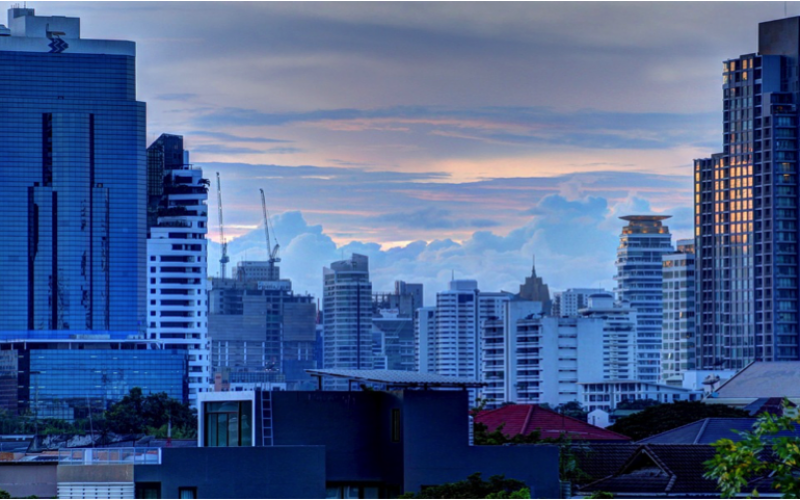What will the recently-struck TPP agreement mean for Thailand?

With a final agreement on the Trans Pacific Partnership reached and ratification at the national level pending, concerns over lost competitiveness are growing among nations excluded from the mega trade deal.
Thailand is one such nation largely representative of these concerns. In 2014, members of the TPP consumed nearly 50% of Thailand’s exports, leaving the kingdom substantially exposed to trade diversion risks. A failure to join TPP in the near future would have devastating consequences for exporters within the Kingdom.
This being said, Thailand is a diverse economy and its many exports have varying degrees of exposure to TPP member states. Furthermore, recent commitments to reforms by Thai authorities, in conjunction with several regional initiatives, look ready to provide some mitigation to the TPP’s potential externalities.
Nonetheless, exporters should pay close attention to their degree of exposure to TPP as well as the deal’s implications for trade diversion and political risk. Levels of dependence on TPP markets and the nature of its member states’ demand for goods are both expected to play large roles in the realization of industry specific losses of market share.
On a macro level, exporters are likewise exposed to Thailand’s competiveness in relation to TPP markets. The large dependence of Thailand’s economy on the Trans Pacific region is sure to result in swift action on the part of Thai authorities should trade diversion adversely impact unemployment or economic growth.
Thai Exports: The top five
In of 2014, Thailand’s top five exports to the world – amounting to a 50% of its total sales – included Electronic Equipment, Machinery, Vehicles, Rubber, and Plastics. With a consumer base that is still in the process of developing, any realized trade diversion is unlikely to find natural mitigation in supplementary domestic consumption. Instead, exporters are expected to be forced to find international alternatives.
Compounding this problem, an overview of Thailand’s recent trade data reveals industries most geared towards exports (Electronics and Machinery) are also the most dependent on TPP export destinations. This pronounced exposure to TPP markets creates substantial risk for firms involved in these industries and is likely to increase pressure on Thai authorities in the event of realized trade diversion.
Exports at Risk
While assessments of Thailand’s exports can illuminate the exposure and magnitude of potential trade diversion, this data is insufficient in establishing a link between trade liberalization and reduced demand. Data from the International Trade Commision’s Trade Map fills this gap by revelaing the TPP’s aggregate balance of trade with regard to Thailands top exports.
On a positive note, results indicate the TPP runs substantial deficits in Thailand’s most important exports – Mahceriery and Electronic products. In the short term, even with increased TPP production, demand for these goods is likely to remain strong, shielding those with vested interests. In addition to protecting exporters, the short term stability of demand should play a mitigating role on the buildup of pressure on Thai Athorities and help to mitigate against marco political risk.
Although the existence of trade deficits is sure to assist in the reduction of political risks at a macro level and help to ensure profitability in Thailand’s most important exports, other industries are likely to see substantial reduction in demand. In the short term, Plastics exports are likely to see demand declines as the TPP has a surplus in production and is more than capable of meeting its own demands. Although Vehicle production is highly susceptible to these risks.
TPP Competitors
While reductions in trade barriers certainly increase the competitiveness of TPP members realive to Thai producers, certain states party to the TPP offer similar production conditions to the Thailand and present direct competition for Thai exporters.
According to the World Economic Forum’s report on Global Competitiveness, the ability to attract investment is contingent upon the nature of a given economy. Under a classification system that includes Factor based, Efficiency based, and innovation based economies; Thailand is classified as a efficiency based economy and derives its competitiveness from the effective production of low cost goods.
While majority of TPP member’s derive their competitiveness from innovation, Peru and Vietnam stand out as two economies that can offer similar advantages to Thailand. Vietnam in particular – with a similar geographic location and comparable population – offers similar production conditions to its neighbor.
sourche: http://globalriskinsights.com/2015/10/thailand-tpp-exports-risk/
Δεν υπάρχουν σχόλια:
Δημοσίευση σχολίου